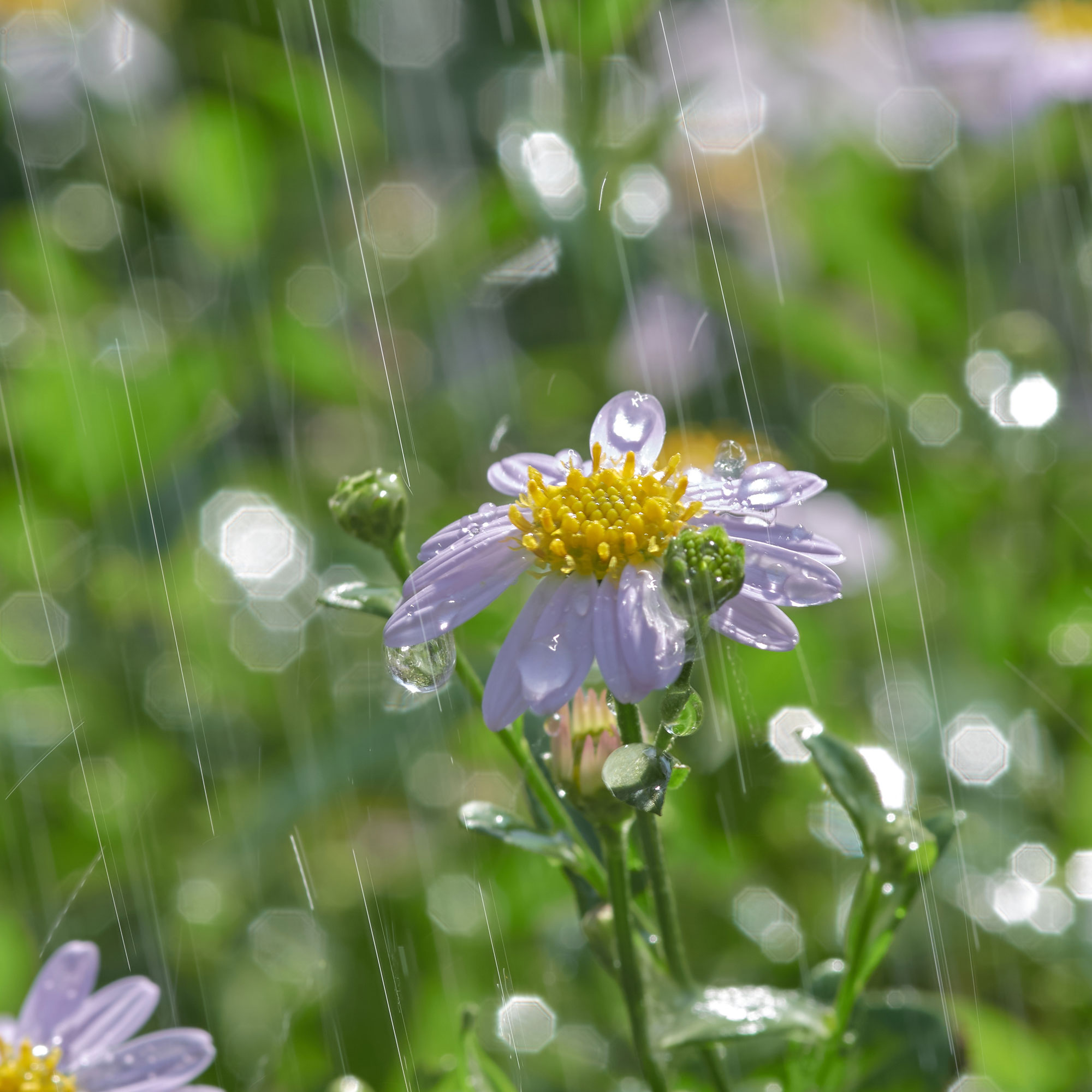
When the wet weather draws in, you can almost hear a collective ‘Oooh’ from gardeners across the country, all celebrating the rain that will water their lawns, help their flowers bloom, and feed their crops. But the rain can also play havoc on your garden, which is where this wet weather guide comes into play.
No matter how extensively you plan your garden idea, the weather can switch things up in an instant. One minute, your plants are showing signs of heat stress, and the next minute, the heavens have opened, and you feel forced inside to escape the rain. And while the wet weather will keep your plants well-watered, what about the rest of your garden?
There’s so much to do in the garden when it’s raining besides planting and pruning. All you need to do is don a raincoat and some welly boots and follow these expert-approved tips - and we guarantee that your garden will thank you for it.
What to do in the garden when it’s raining
‘The experts are predicting that summer 2024 may be one of the wettest summers on record, which isn’t great news for gardeners, but it’s important to be proactive,’ explains Simon Toomer, Curator of Living Collections at Royal Botanic Gardens, Kew and in collaboration with Husqvarna UK. So, follow this wet-weather gardening guide to keep up with your gardening efforts.
1. Get rid of slugs and snails
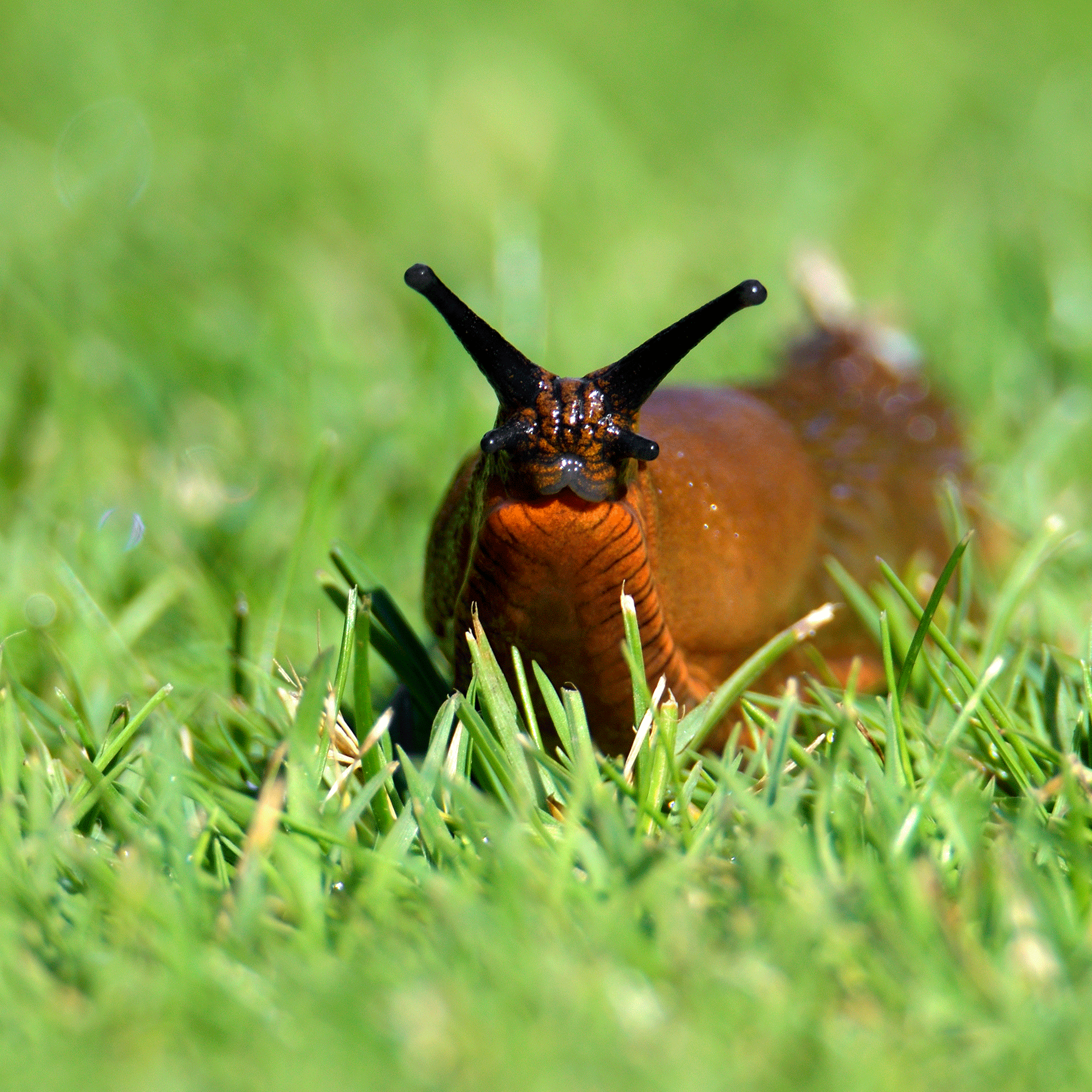
Unfortunately, slugs and snails thrive in damp, warm environments. And if summer 2024 is set to be a washout, there’s a high chance that gardens across the UK will see large infestations of these slimy invaders over the coming months.
Because of this, you should take advantage of the wet weather to get rid of slugs and stop snails from eating your plants. Pim Dickson, horticulturist expert at Mr Fothergill's, echoes this. He says, ‘A rainy spell in summer is the very best time to go out collecting all the slugs and snails that are lured out from their usual hiding places.’
And while you wander around the garden collecting and relocating these slimy critters, you could also utilise the slug trap hack, or use slug tape, nematodes, or eggshells in the garden.
Whatever the case, the wet weather is prime slug and snail collecting time. If you don’t, you may find your plants and crops suffer as a result.
With the ability to treat 40 sqm of garden, these nematodes will quickly get rid of slugs in your garden. Just remember to re-apply every six weeks for guaranteed success.
If 1kg isn't enough for your slug infestation, you also have the chance to buy a 3kg bag, an 11kg bag, or two 12 litre bags. Aim to apply a 20-30mm layer around the base of plants for best results.
Coming in a pack of two, this copper slug tape should keep your whole garden free of slugs. The self-adhesive nature of the tape means it'll stick to anything, too.
2. Tackle weeds
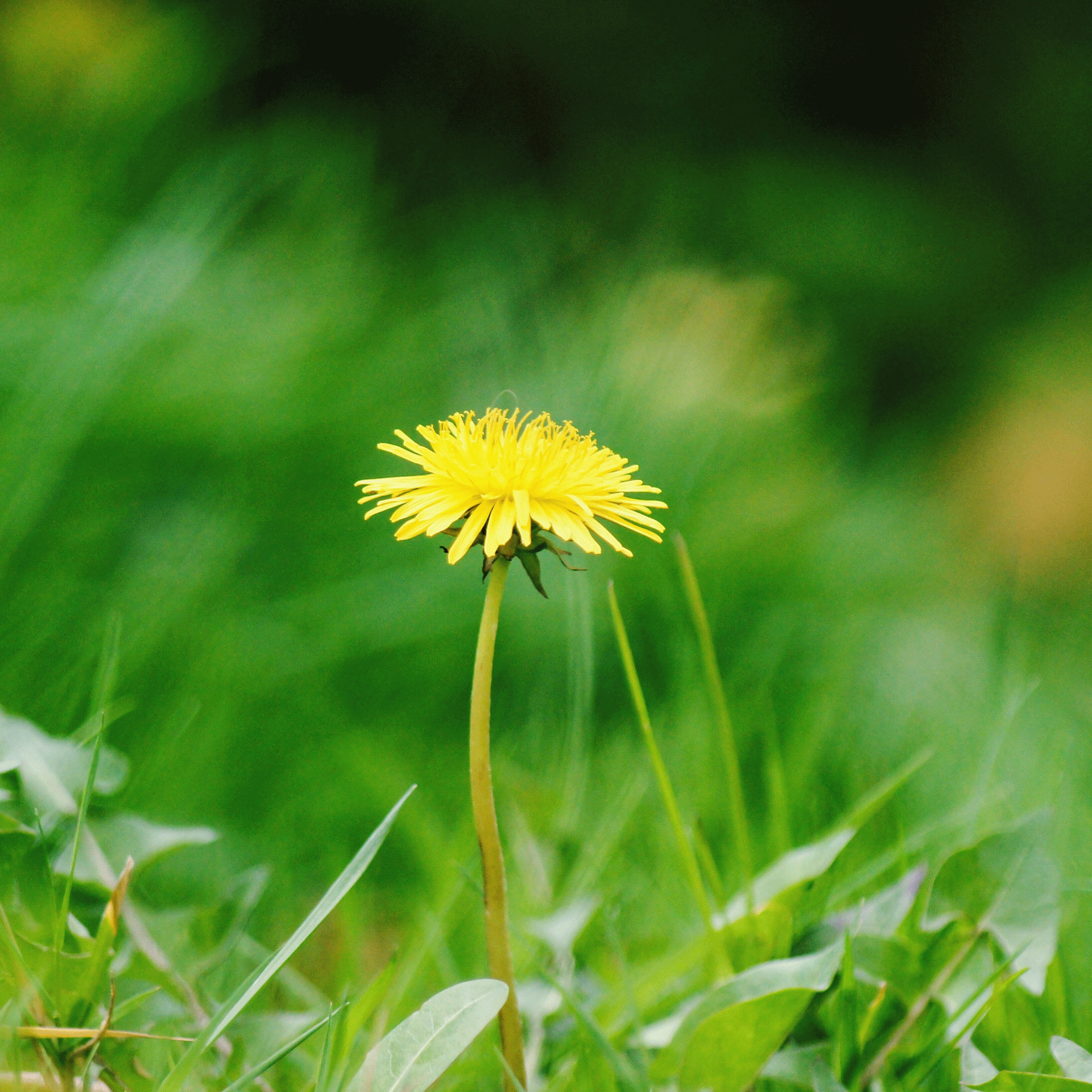
There’s a high chance that you already spend way more time than you’d like trying to kill weeds, but one thing you might not realise is that rain can actually help you get rid of weeds once and for all.
In fact, many experts say that the best time to de-weed your garden is right after heavy rain, as the soil and the roots are more pliable - making them easier to remove.
Thankfully, there are many ways to get rid of weeds - from Nancy Birtwhistle’s viral weed hack to the Ideal Home favourite, the Root Slayer. But for Simon, mulching the garden is his go-to.
He says, ‘Weed control is a big issue. Rather than using chemicals, you should try mulching as well as planting in ways that doesn’t leave a lot of open ground, as this is beneficial to weed spreading.’
In fact, mulching is also considered to be one of the best ways to keep weeds out of flowerbeds, so it’s well worth stocking up in the run-up to our wet summer.
Our Senior Digital Editor, Jenny McFarlane, brought this innovative product to our attention, and it's safe to say that we're now converted. It's a little pricey but totally worth it.
If you're looking for a long-term, sustainable way to get rid of weeds, this mulch should do the trick. And this 40L bag should definitely be enough to cover your garden borders.
Ever heard of flame weeding? If you want to heat things up and give this a go in your own garden, you'll need one of these weed burners.
3. Check on your water butts
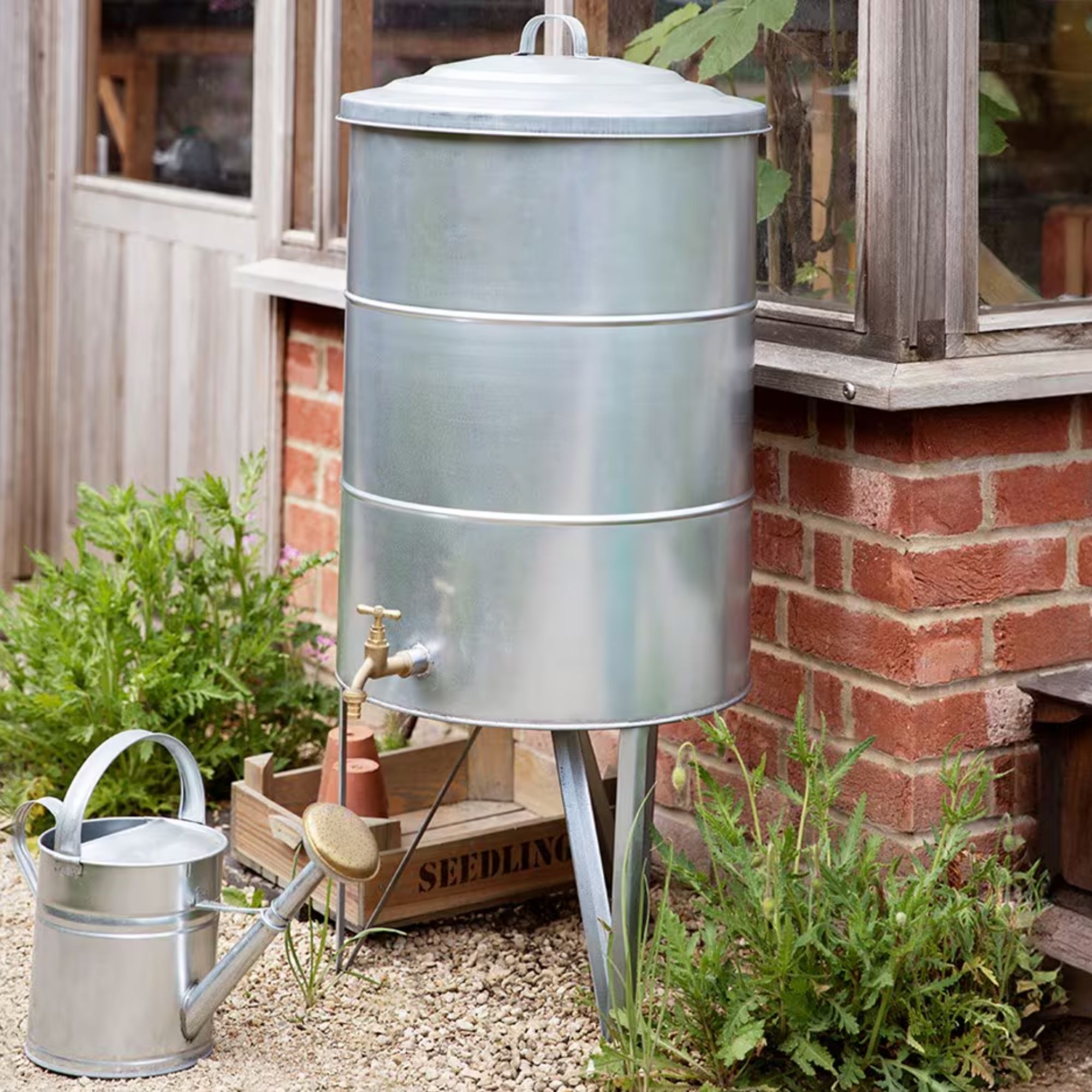
Wet weather can be pretty depressing, so it’s always a good idea to make the most of a bad situation. And adding a water butt to your garden can help you save money on your water bills. So, use this opportunity to check on them - or consider buying one.
Pim says, ‘It is a great time to get out and check on all your rain-collecting gutters and water butts, making sure they are all working efficiently and collecting as much as possible.’
‘Rainwater is so much better for your plants than tap water, and it's well worth catching every drop you can. Use it for your house plants too, and you’ll soon notice the difference.’
Thankfully, there are also so many ways to make a cheap water butt look more attractive, so you don’t have to spend a fortune. But if you really don’t want to splash out on a water butt, you do have options.
As John Clifford, a garden expert from Gardenstone, explains, ‘There's no better time to set up a rainwater collection system than when it is raining. This can be as simple as placing large buckets outdoors to collect rainwater, this can then be used to water plants once the rainfall has stopped.'
Alternatively, you could create a whole rain garden to make the most of the rainy English weather even when the sun is shining.
This 100-litre galvanised steel water butt is as attractive as they come and will make a striking feature in your garden. Plus, it'll give you the chance to harvest your own water.
If you already have a bucket or decorative barrel you can turn into a water butt, you can utilise rain chains to draw the water in. They come in so many different shapes and forms, too.
If you're on a budget but still want to make the most of the rain, this water butt has got you covered. It's cheap and cheerful, and comes with everything you need to get it set up.
4. Aerate your lawn
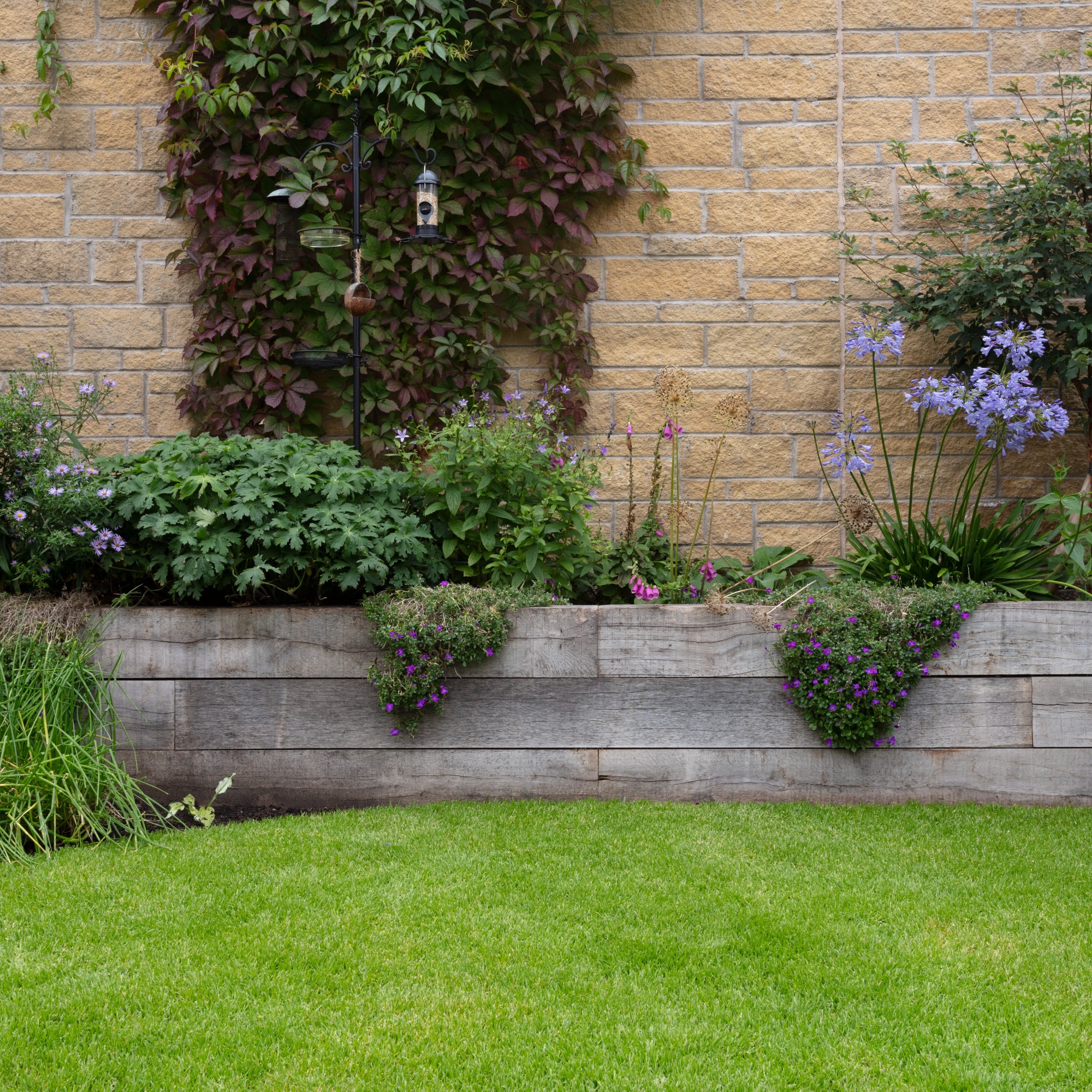
Although rain can be wonderful for thirsty plants, it can also have a disastrous effect on your lawn and ruin all of your lawn care efforts. Because of this, you should carefully consider whether you should cut wet grass or not.
In fact, Pim suggests avoiding your lawn entirely. He says, ‘It is always best to stay off the waterlogged ground, especially beds and borders, as walking on it will compact the soil and ruin any open and airy soil structure there is.’
If you struggle with poor lawn drainage, however, you may have to intervene and aerate your lawn. Otherwise, the compacted soil will prevent vital air and nutrients from reaching the roots.
You should only do this when there’s a break in the rain, and, ideally, wait a day or so after the rain has stopped before aerating your lawn, as this will give it a chance to dry out slightly. Then, you have a choice to make.
You could either use a rake or garden fork, an aerator, or aerating shoes to get this wet-weather gardening job done.
If you don't have a garden fork at your disposal, this one is made from weather proofed hardwood shaft for greater durability and is totally rust-resistant.
This multi-purpose gadget has the ability to aerate your lawn, but can also scarify by removing dead grass, moss & leaves with its interchangeable rollers.
These shoes may seem like a gimmick, but with almost 200 4.4-star reviews, there are many happy customers who think otherwise. So, give them a go.
5. Clean and sharpen garden tools
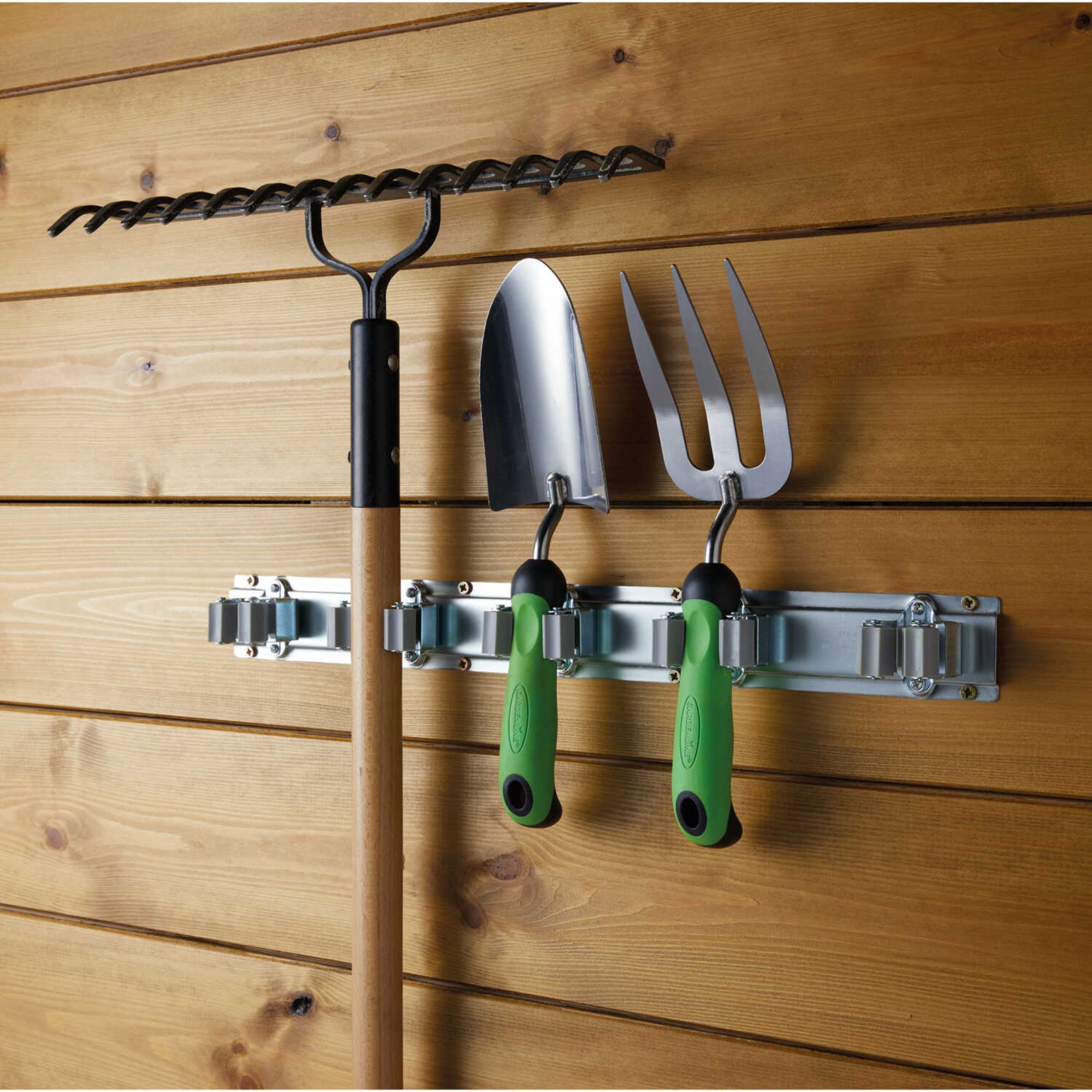
If you have itchy feet but don’t want to get wet, cleaning your gardening tools will definitely keep you busy when it’s raining. While you’re at it, it’s also a good idea to sharpen your pruners, shears, and even the blades on your best lawn mower.
‘I often use the time when it is raining to clean and sharpen garden tools,’ says Pim. ‘If you are fortunate enough to have cover, like a shed with a veranda or one large enough to pull up a chair in the doorway, it can be a lovely atmospheric way to spend an afternoon.’
This is echoed by John, who adds, ‘A rainy day is the perfect time for cleaning and organising your garden tools. Often the sharpening, cleaning and organisation of tools can be neglected for more important tasks, this leads to wear and tear and can shorten the lifespan of your tools.’
‘After you have sharpened and cleaned your tools, take the time to create a designated space for each tool so that they’ll always be on hand when you need them.’
But if you don’t have space for your tools, make sure you check out our guide on choosing the best outdoor storage for your garden.
If you have rusty metal tools, all you need to do is spray them with white vinegar before wiping with a cloth and rinsing with water. Alternatively, you could use beer.
This blade sharpener will help to keep your garden tools in tip-top condition, and even comes with different settings for your different tools.
Use linseed oil to protect garden tools with wooden handles. Ideally, let the soil cure overnight to form a protective barrier and prevent splitting.
6. Take the time to transplant
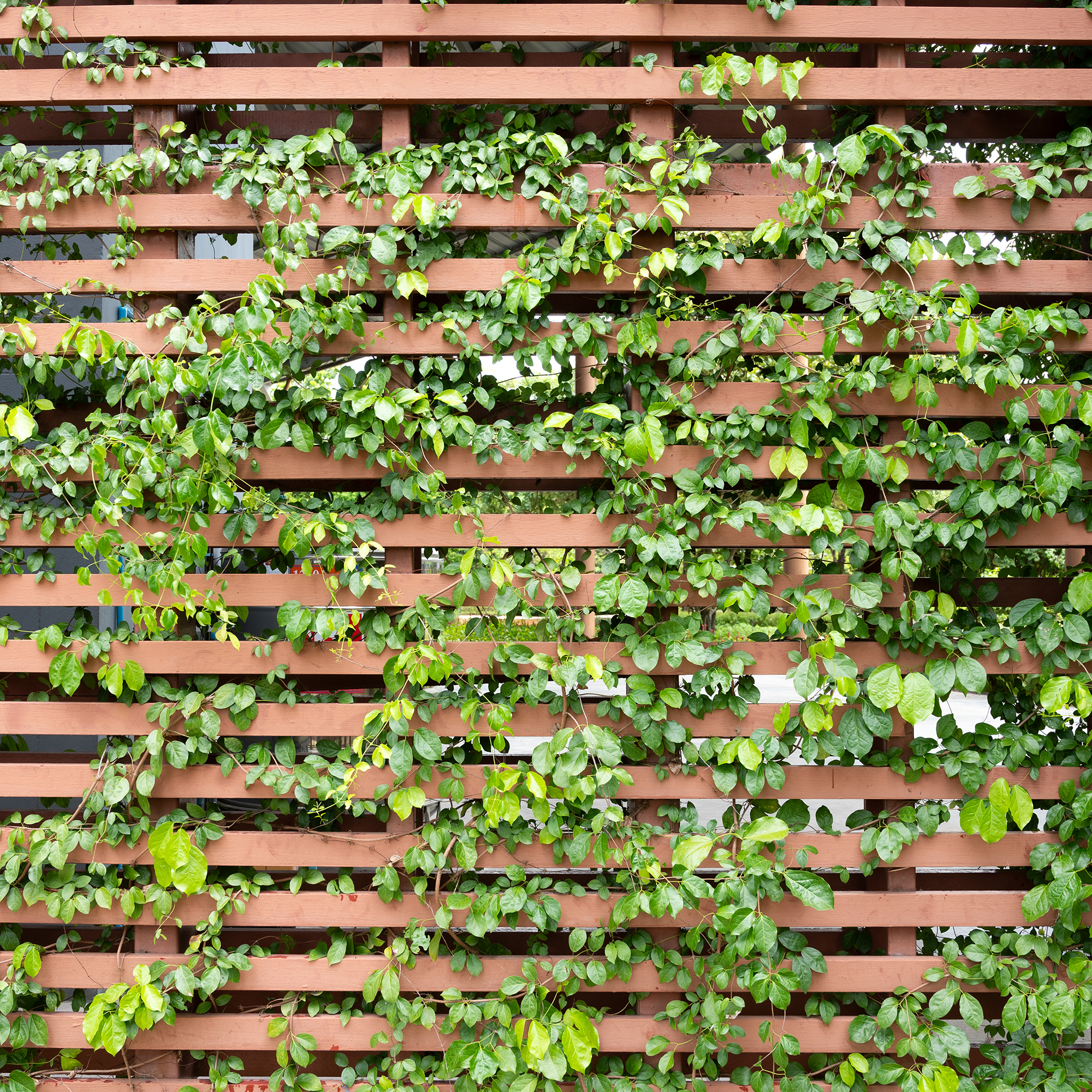
Hydrangeas not getting enough light? Climbers getting a little too unruly? If you’ve been waiting for the right time to move plants in the garden without killing them, it might work in your favour to get started as soon as the rain does.
Calum Maddock, gardening expert at HomeHow.co.uk explains, ‘One of the benefits of having periods of rain is that it makes the soil very cooperative for planting and transplanting. A day of drizzle can actually help your efforts to install some new plants in your garden or move others to a new spot.’
‘The soil is more forgiving, and the moving process can be less stressful for the roots which can anchor more easily in moist soil. With dampened earth, the digging process is also easier and puts less physical strain on you.’
So, make sure you know which plants you want to transplant and gather your tools. Just make sure it’s not pouring it down with rain when you do it.
If you're moving plants in the damp soil, you're going to want to protect your hands. And these gardening gloves not only look pretty, but they'll keep your handsy perfectly clean and dry.
To help you lift the plants out of the ground, you'll need a trowel. This one is made from polished aluminium alloy and has been designed with durability in mind.
When transplanting anything in your garden, you want to avoid placing them on the ground. So, lift the plants up, pop them on this tarpaulin, and then move to the new location.
7. Inspect your container garden
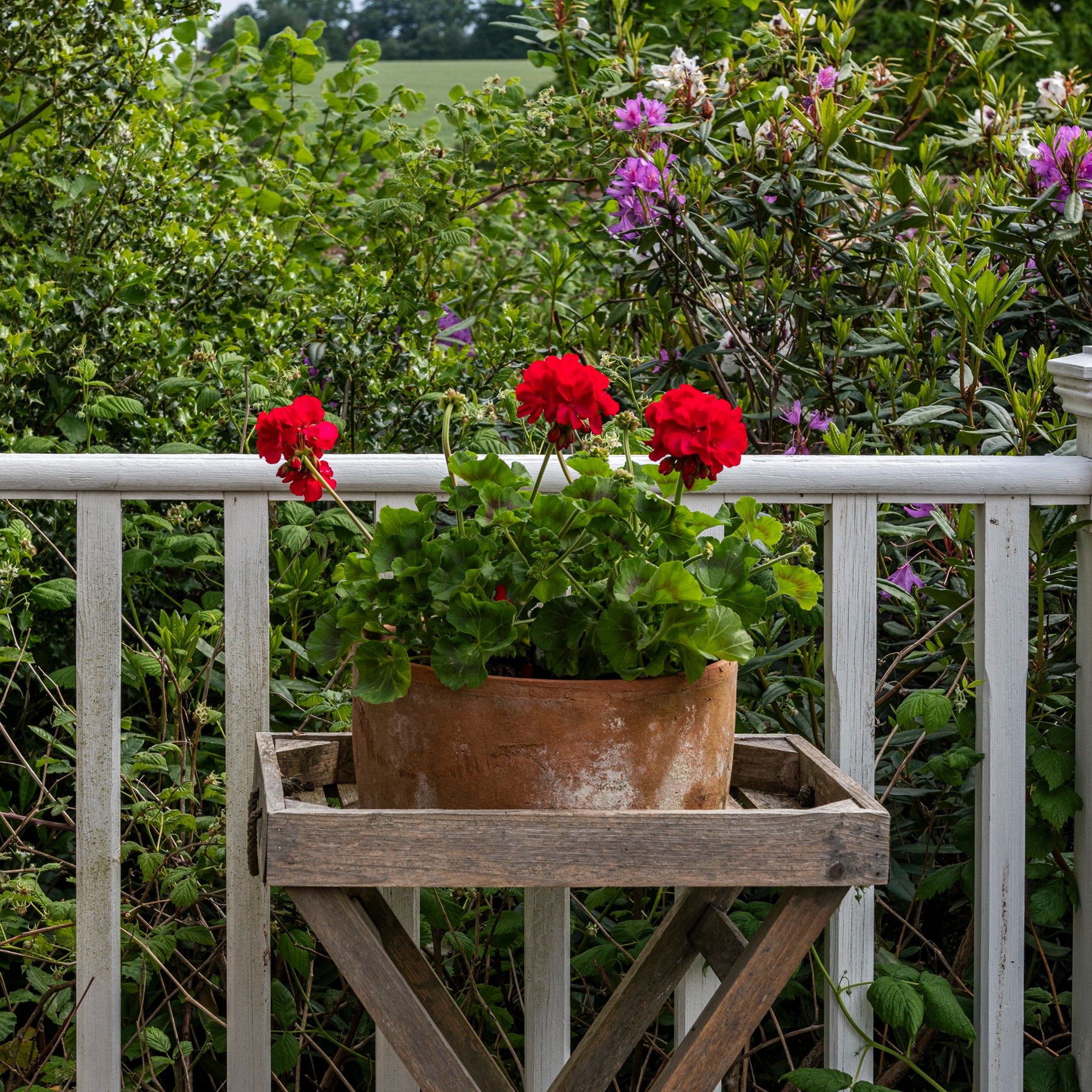
Whether you choose not to plant in-ground or you want to make your decking look more expensive, a container garden can be a welcome addition to your outside space. However, container gardens can struggle during the wetter months and are often prone to waterlogging.
Because of this, you should inspect container garden when it’s raining and maintain a wet weather schedule to monitor them.
John explains, ‘It’s a good idea to take a quick walk around your garden and identify any plant pots that aren’t draining properly and may be getting waterlogged. Move these pots to a sheltered area of your garden to prevent plant rot.’
‘Similarly, if you’re aware that rain is forecasted, it may be wise to move your plants before the rainfall starts.’
If you can't move them, aim to improve the drainage in your pots or take measures to protect your plants from the elements.
If you think your plant pots are lacking drainage, simply lifting them off the ground can be a game changer. All you need are some pot feet to do that.
If your drainage problems are stemming from the fact that your plant pots don't have drainage holes, swap them out for these outdoor planters instead. They also come in three different colourways.
If you don't have the space to move your container garden, consider using these cloches instead. Just remember to remove them when the rain stops.
FAQs
Will plants recover from heavy rain?
Yes, in most cases, plants will recover from heavy rain. Although it may seem as though your plants take a battering during heavy rainfall, most are strong and hardy enough to bounce back fairly quickly.
However, smaller and more delicate plants may suffer from broken stems or fallen flowers as a result, and those with poor drainage may find that their plants struggle from water saturation.
That’s why it’s so important to prevent waterlogging in your garden and deal with any drainage issues you may have as soon as possible.
How long should I wait to water after heavy rain?
Unfortunately, this isn’t a one-size-fits-all answer, as this all depends on the quality of your soil, the heaviness of the rain, and the outside temperatures. In some cases, you may only need to wait a week to water again. In other cases, it may be a few weeks.
Because of this, the best way to determine whether you need to water your plants after heavy rain is to test the soil. You can do this by inserting your finger into the soil (about knuckle-deep) and testing the moisture levels. If the soil feels dry, they need watering. If it’s still moist, you can leave it a bit longer.
So, which of these wet-weather gardening jobs will you be doing next time it rains?







